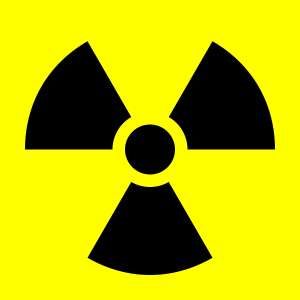There are a few types of metal that we cannot accept due to environmental and health concerns; radioactive scrap metal falls under this category. Let’s look a little closer at the contamination of scrap metal and the safeguards we have set up to protect us from its negative side effects.

Radiologically Contaminated Scrap Metal
According to the EPA, scrap metal is frequently contaminated when small amounts of radioactive material are mixed in with the scrap. Contamination generally occurs when the scrap metal slips out of regulatory control, such as when it has been lost or stolen.
Another common cause of contamination is that radionuclides from industrial processes contact the scrap. In these cases, radionuclides can either be man-made or naturally occurring (NORM). Either due to negligence or the minor quantity, these materials are not under regulatory control and oversight.
Contamination also frequently occurs when materials have very low levels of radioactivity. While the level of radioactivity is below the regulatory limit, frequent contamination can alter the scrap metal, rendering it useless for recycling.
Sources of Scrap Metal to Watch Out For
There are a few sources of scrap metal that your should be wary of because they are common sites of radioactive contamination.
Demolition sites frequently carry radioactive materials, especially if it was a commercial building. Oftentimes though, demolition contractors are unaware that radioactive materials are present. If you are recycling material from a demolition, try and find out if the lead contractor knows of any radioactive materials that were in the building. This may be able to save you some time in the long run.
Naturally, the demolition of nuclear facilities is the largest source of contaminated scrap metal. Government agencies are responsible for handling this type of scrap, so any regular, legal scrapper need not worry!
Call Gulf Coast Scrap Metal at 713-868-4111 to learn more about avoiding contaminated scrap metal.